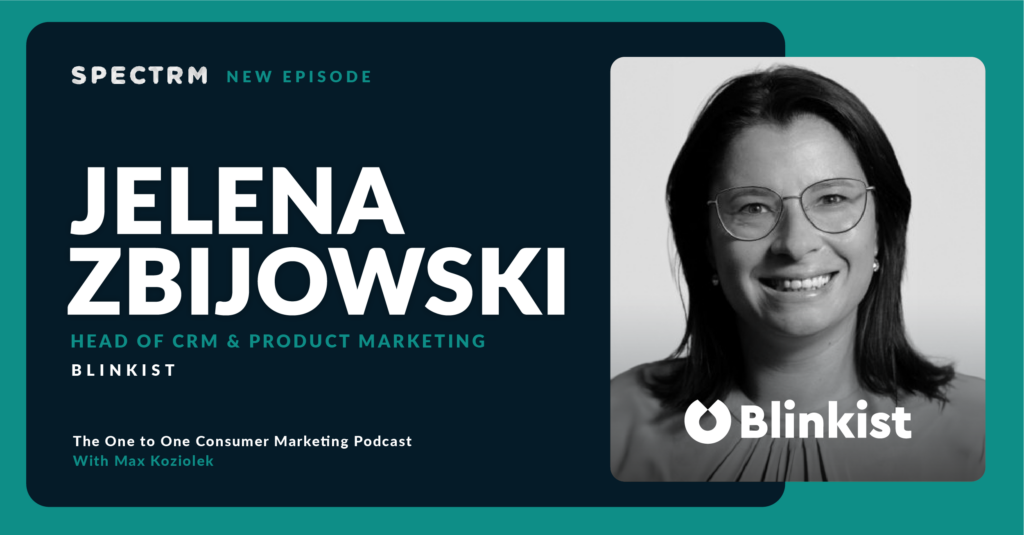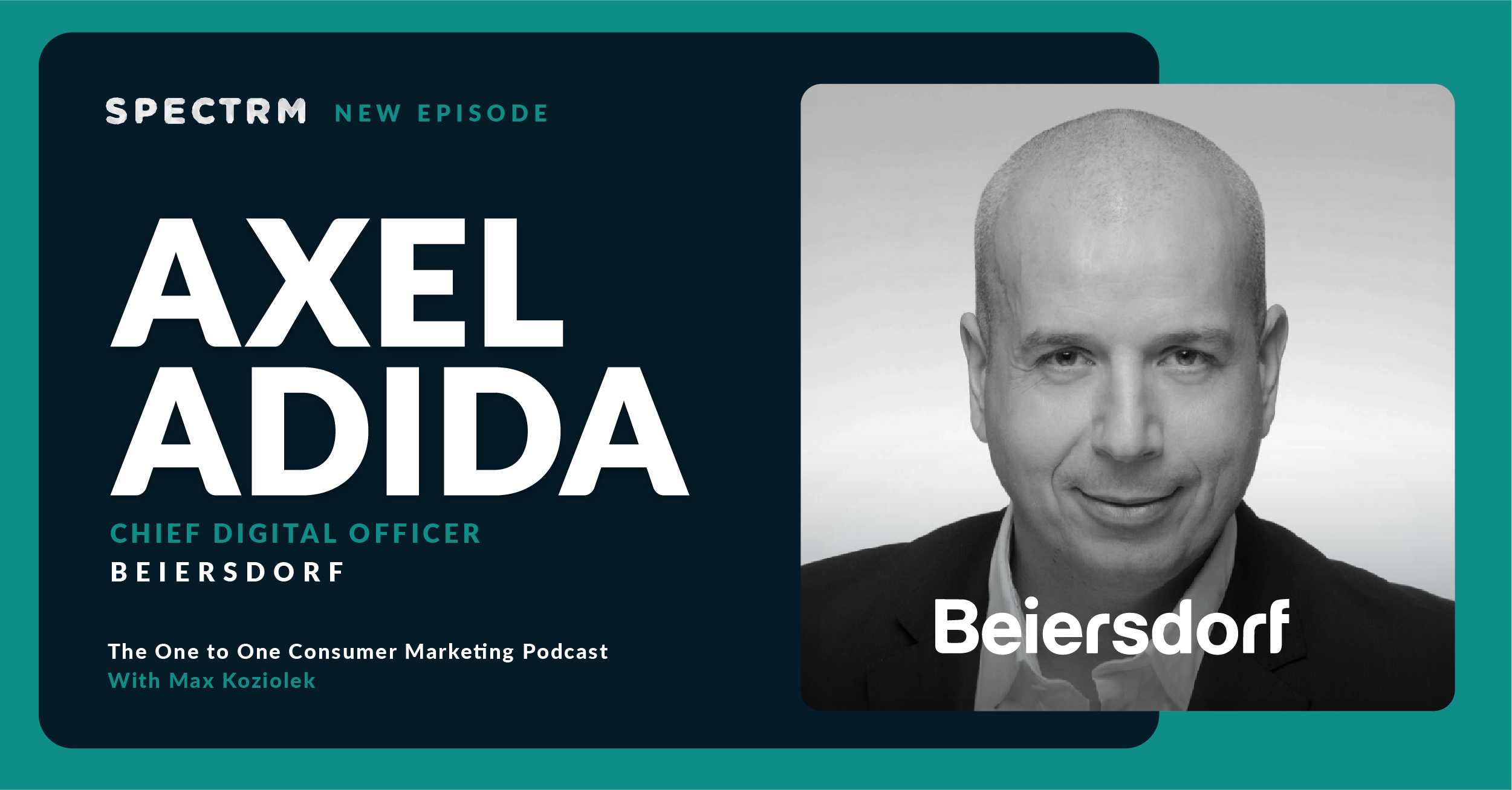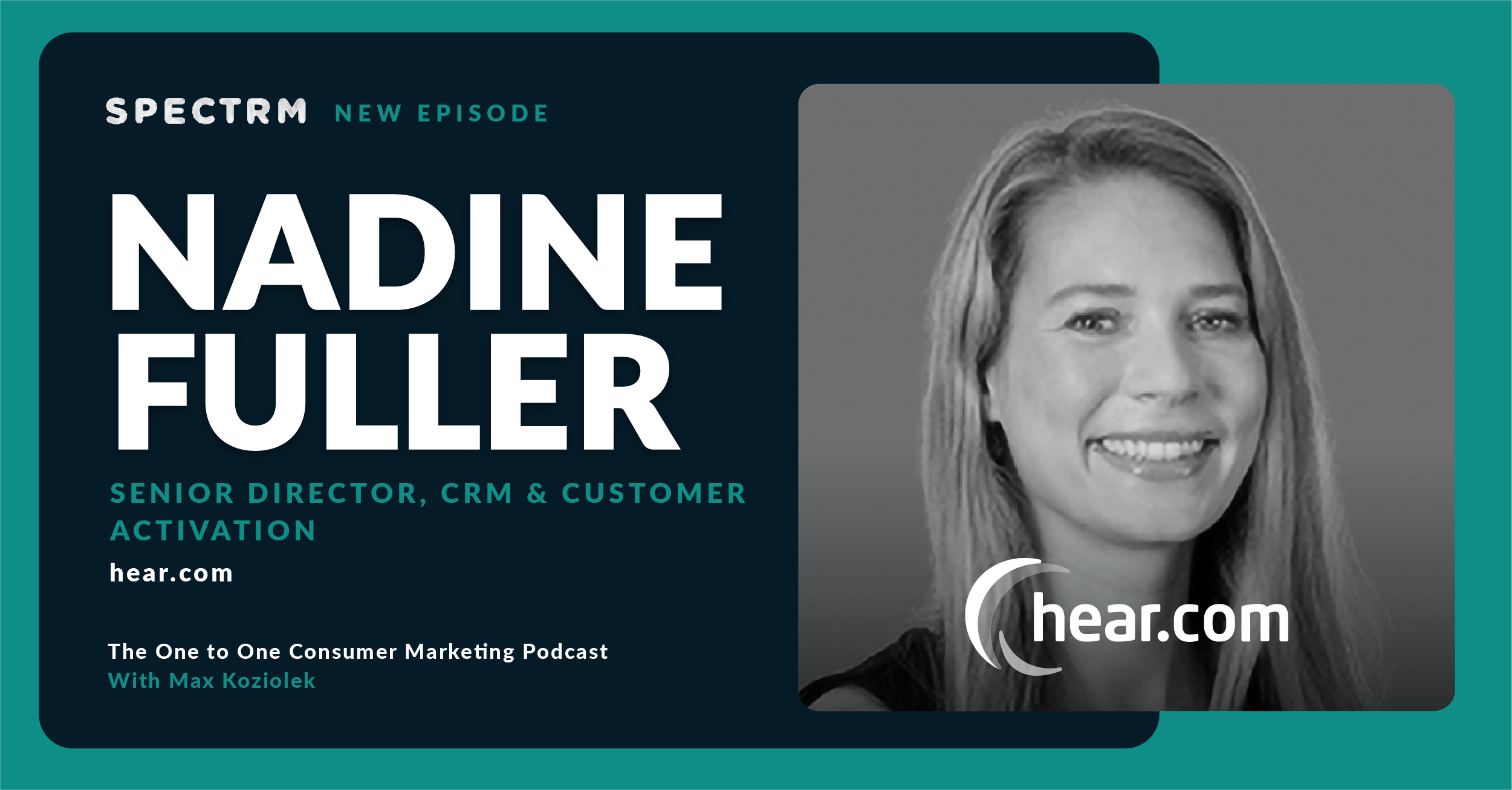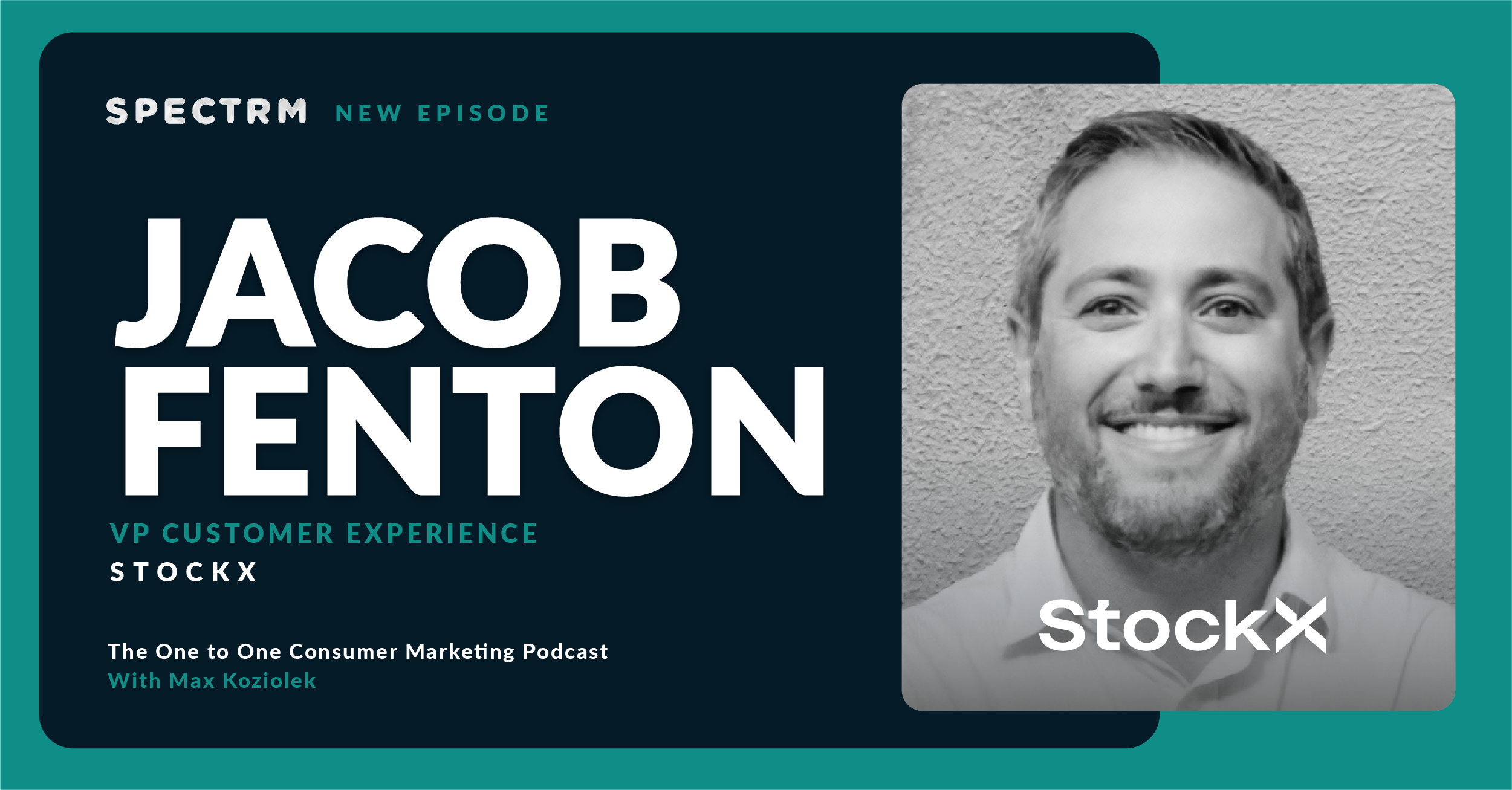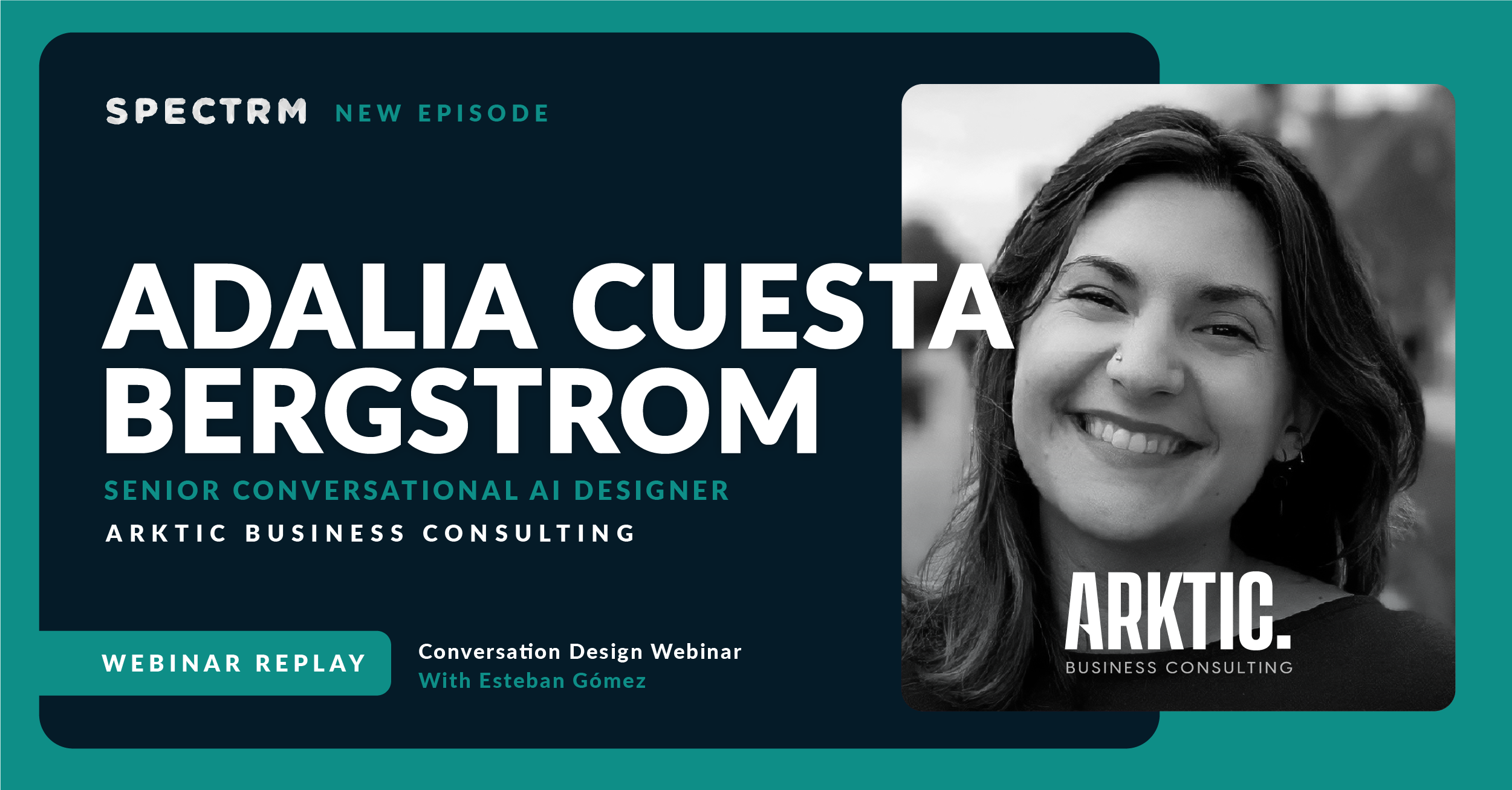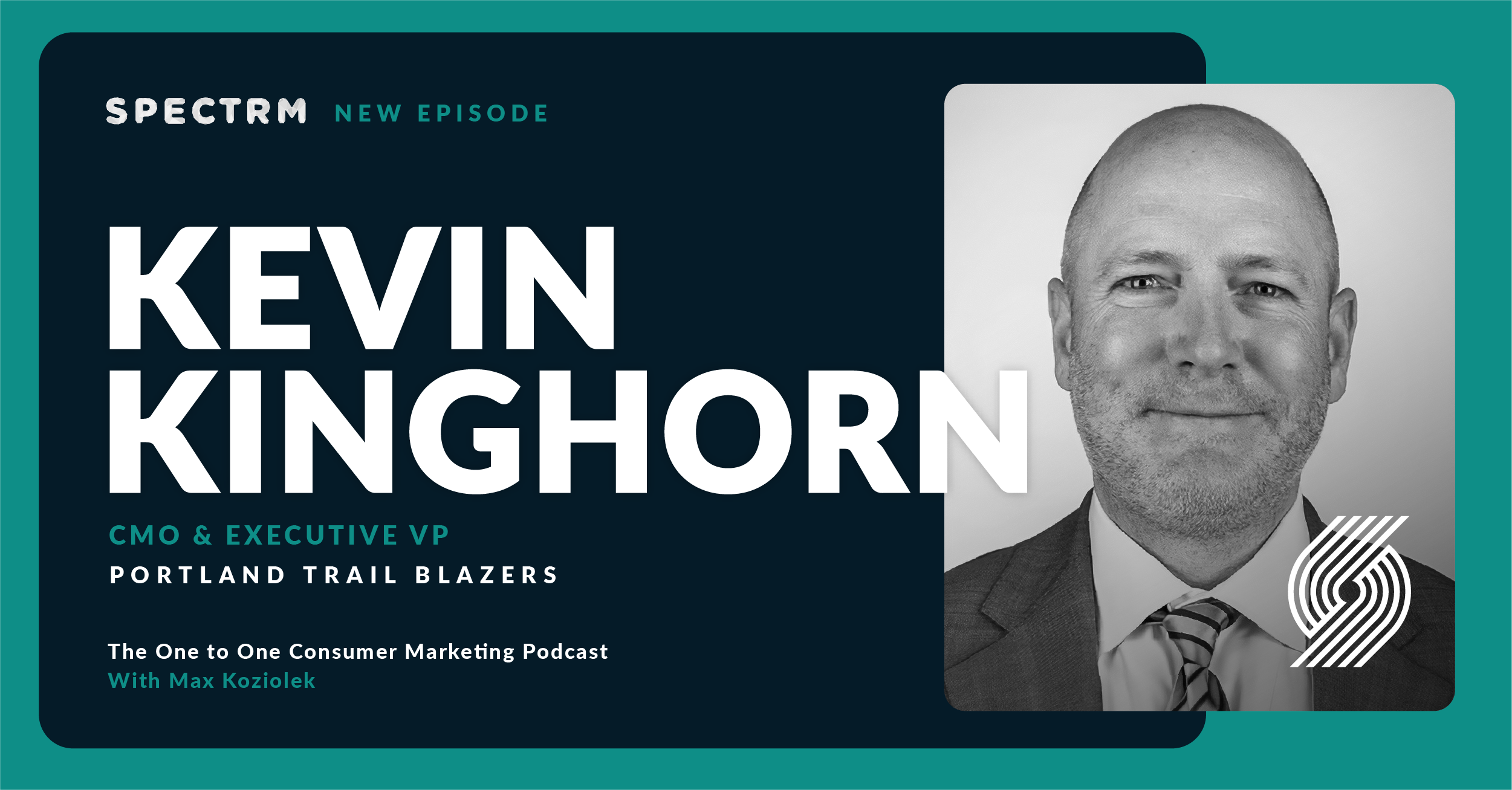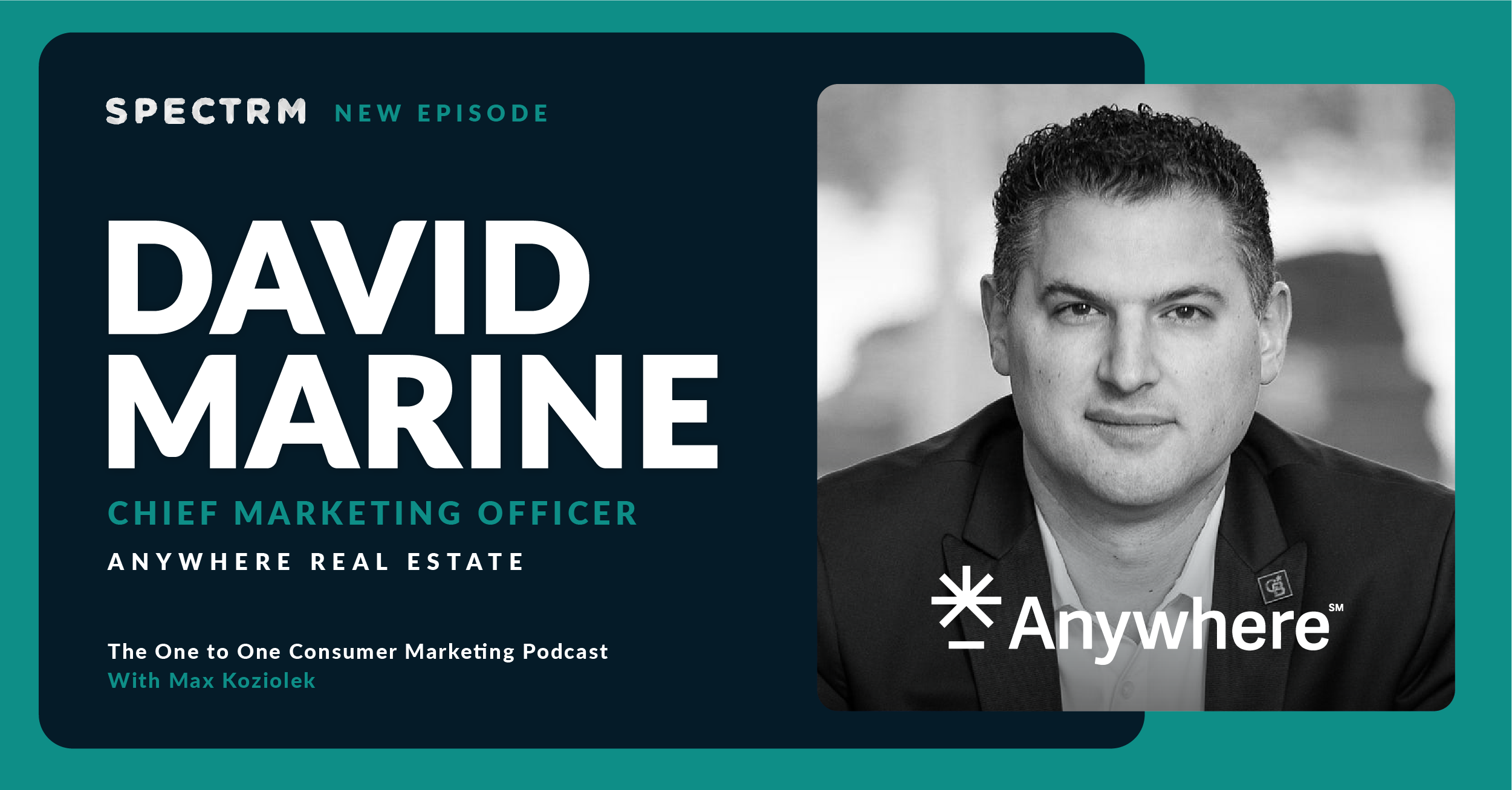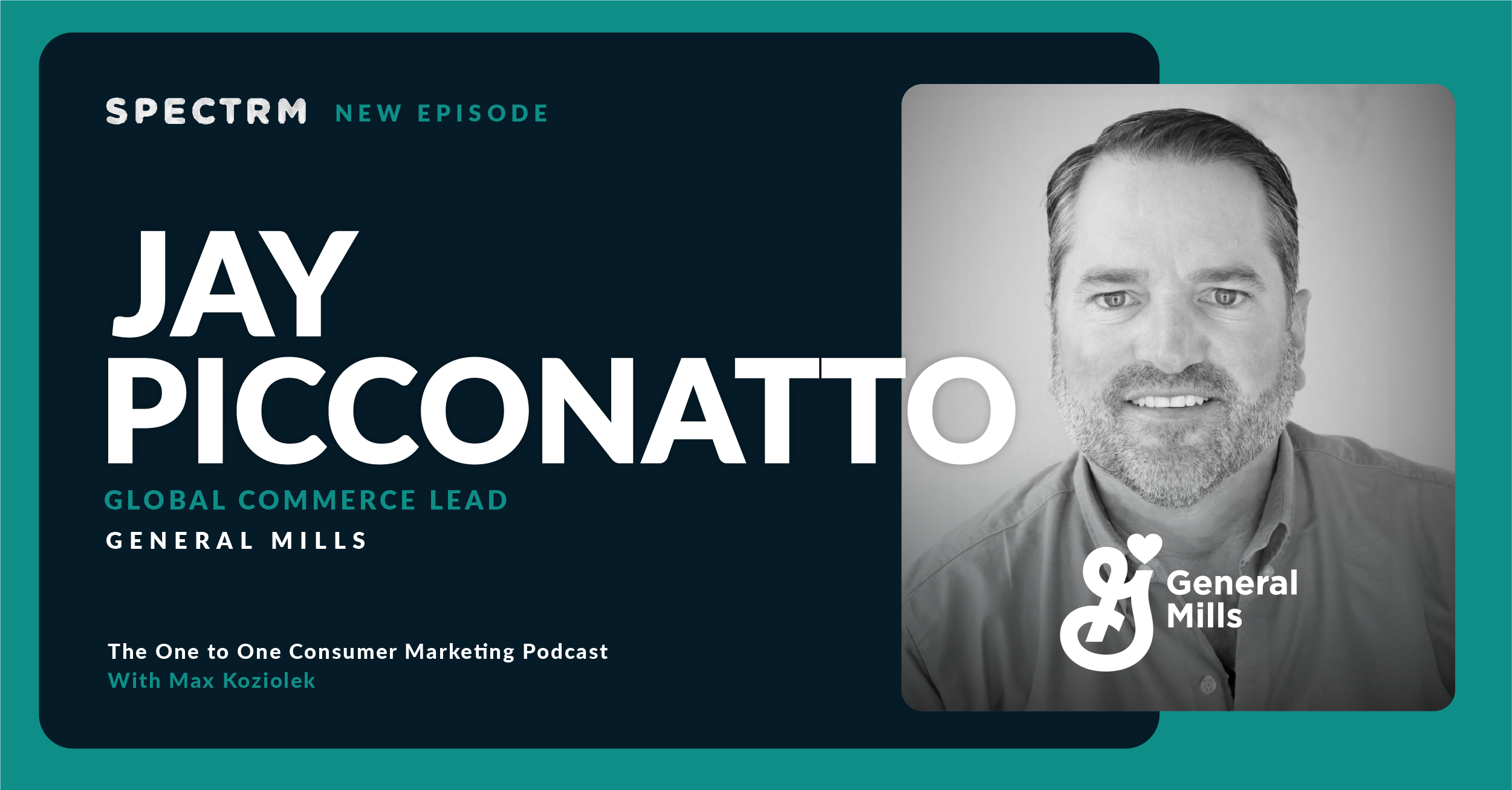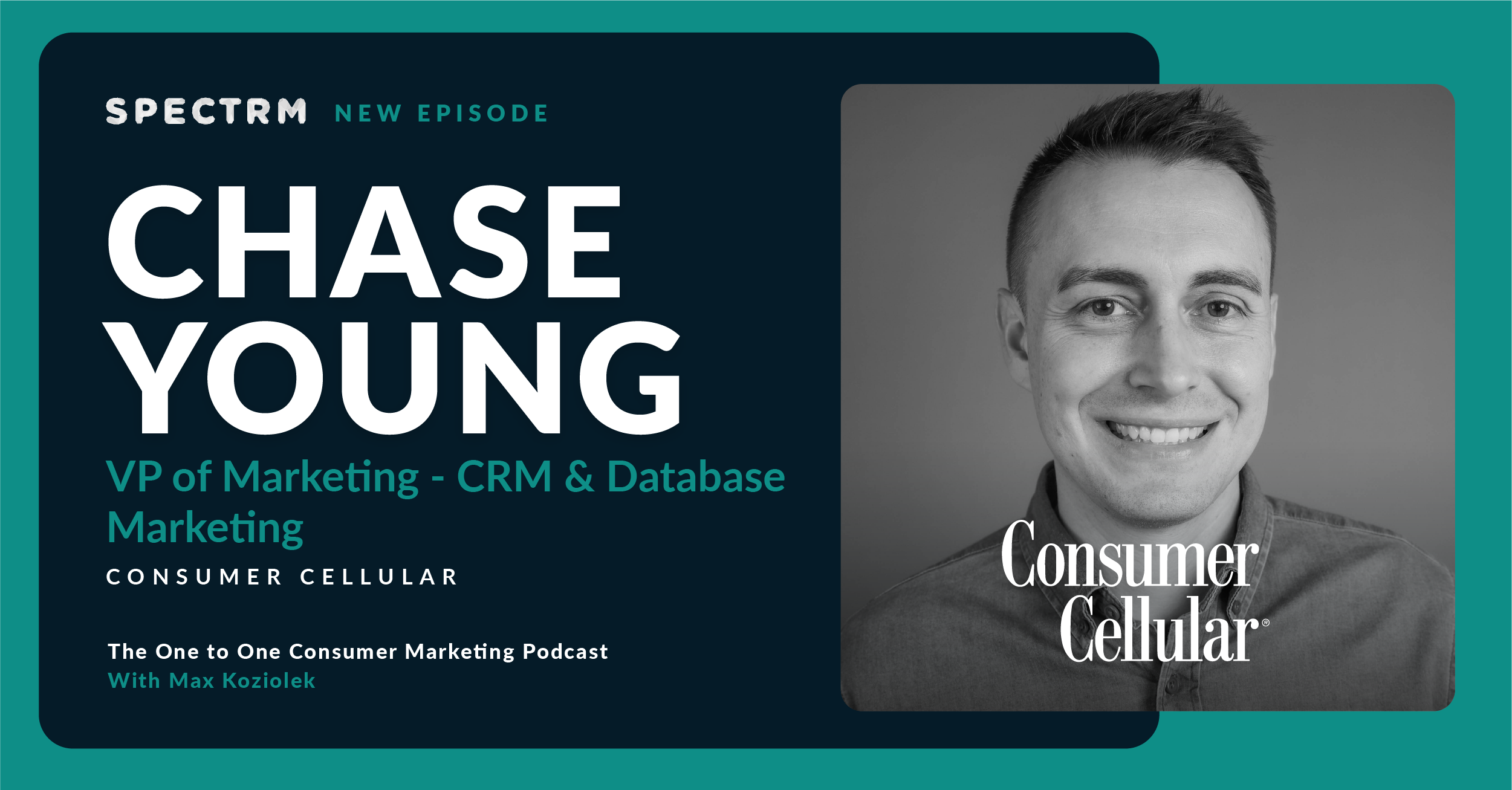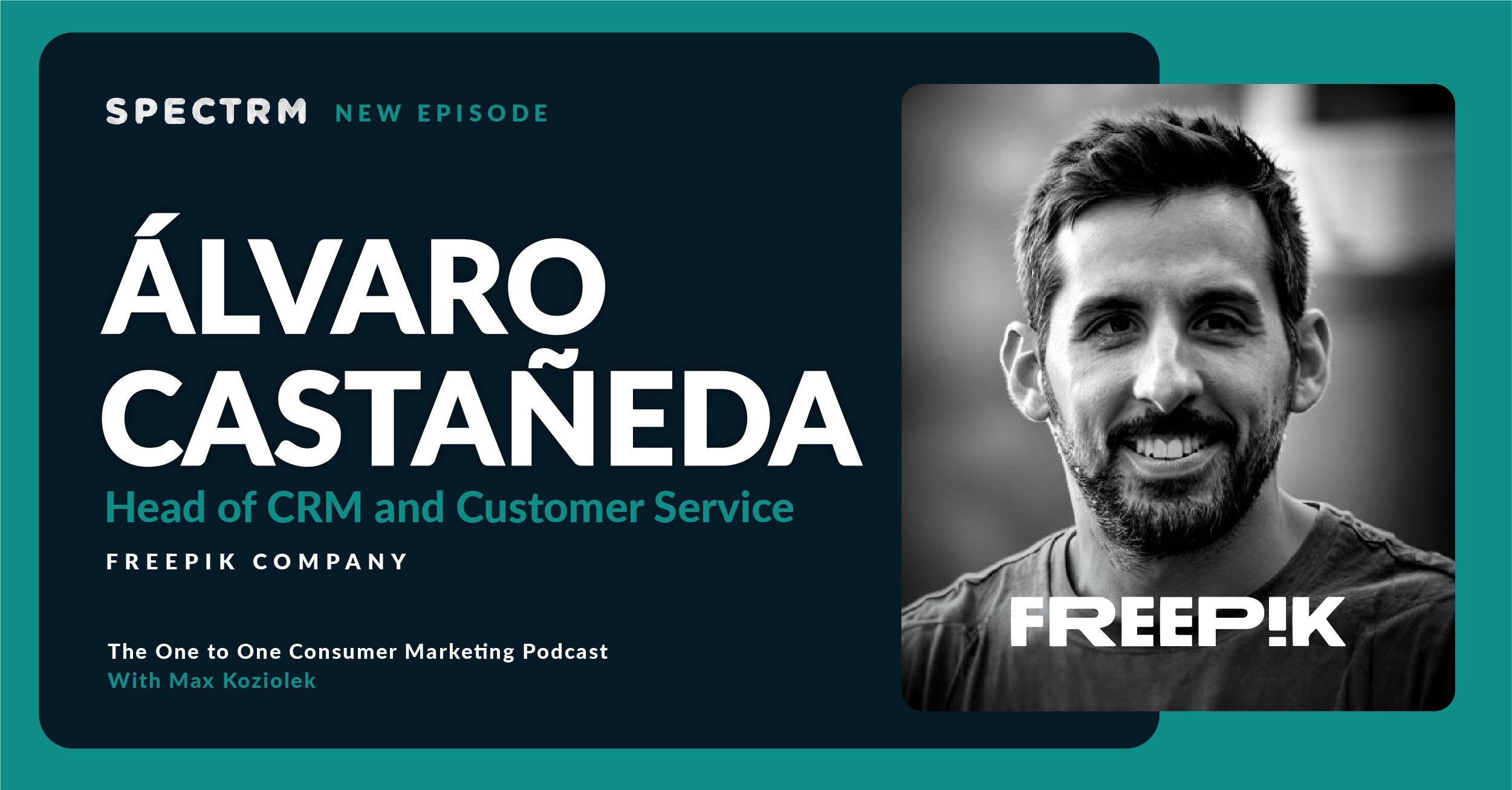Summary
Max speaks with Jelena Zbijowski, Head of CRM and Product Marketing at Blinkist. They discuss how Blinkist engages and retains its customers through its “famous” onboarding screen, education, and selective communication. They also talk about the necessity of collecting zero-party data to inform your personalization efforts, how AI will elevate customer engagement, and advice for marketers around testing, learning, and listening.
Topics discussed
- How Blinkist increases retention by understanding the user, educating them, and being selective with their communication.
- The unique benefits and challenges for CRM and retention with subscription-based businesses.
- Why the CRM team should start engaging at onboarding so they can create personalized experiences sooner.
- How the “famous Blinkist subscription screen” works to drive retention.
- Why the foundation of personalization should be the zero-party data you collect from your customers.
- How AI may challenge the balance between personalization and privacy, but how it will ultimately be a tool to elevate customer engagement.
- Advice for marketers that includes why you should test, learn, and listen, as well as why you should be more data-informed.
What you should focus on is using your own data, so zero-party data. As long as you use the data that you have consent for and that you collect within your app, you're all right.
Guest biography

- Data-driven omnichannel marketer with strong background and experience in London and Berlin. Experienced in building channels from scratch, developing customer-centric profitable strategies and improving marketing processes.
Company overview
Used by over 26 million people worldwide, Blinkist is an award-winning app that finds the most relevant, impactful books and podcasts and distills them down to their key ideas, which can be read or listened to in 15-minute explainers called Blinks.
Industry: E-Learning providers | www.blinkist.com
Subscribe to the podcast newsletter
Transcript
00:00
Jelena Zbijowski
What excites me about subscription models is that journey, that relationship that you get to build with the user. So you started at the beginning of the subscription and you know that you get to maintain it for a longer period of time. So for me it feels that way, at least with subscriptions, a little bit more than fast moving goods. You.
00:27
Max Koziolek
Hey everyone, and thanks for listening to the one to one consumer marketing podcast. Today I’m speaking with Zbijowski, head of CRM and product marketing at Blinkist. Thanks for chatting with me today.
00:37
Jelena Zbijowski
Thank you for having me. Pleasure to be here.
00:39
Max Koziolek
Great. Before we get started, why don’t you tell us a little bit more about yourself, your background and how you ended up in your current goal?
00:46
Jelena Zbijowski
Yeah, absolutely. My name is Jelena and it is indeed true. I lead CRM and product marketing department with Blinkist and what we do within Blinkist content CRM, we really focus on growth and successful retention lifecycle and essentially we’re trying to do the same thing as most of the brands that are listening to this and trying to do is keeping our customers and our users engaged and loyal. Maybe before I start telling you how I got here, I will tell you what Blinkist does. For those of you who don’t know, Blinkist is a leading summary book app and it’s really a learning platform. And what we do, we try to enable growth through different formats. Historically, we have always focused on professional books. Now we’ve changed the formats a little bit more.
01:35
Jelena Zbijowski
We have nonfiction books in the app as well, and you can kind of consume more formats by just reading and listening to a book. And our user is mostly a career focused mind or a team of such that are coming for growth or any other person who is interested in personal growth and really wants to deep dive into a topic but doesn’t necessarily have the time for the entire book. So we generally tend to focus on 15 minutes or less format for our content. That’s what we do. And how I got here was interior journey for me and I got to try a lot of different digital marketing hats and I started an SEO actually in the very beginning and then quite quickly I moved into the SaaS and worked with the masters for a couple of years.
02:24
Jelena Zbijowski
I think this is where I really fell in love with CRM. This is where I really started connecting the dots how psychology and tech can marry together and create something beautiful. And it was really an exhilarating experience. I was working for some big brands in the UK and trying to build their email retention strategies and executing on those. So it was really exciting. Subsequently I moved them into the retail and I worked for a little bit for digital CRM department at the watch gallery at Selfridges as well in the UK, which was indeed a brand that was very challenging and consumer marketing that was very challenging because it needed extremely personalized and bespoke approach.
03:09
Jelena Zbijowski
It’s probably a business like cars, where you either buy one and not a very often consumer, or you just keep on purchasing, because with rolexes you either have a fetish and you buy a lot of them and you really like them or you just buy one and you really hold on to that. So getting retention right was really important. And that was also back ten years ago when CRM was not that developed. It wasn’t necessarily one of the leading channels in the business. It really needed the buy in from the shop floor and something where data was really crucial. It was my retail experience there. Right there. After that I moved to Berlin and joined Hellofresh. Joined Hellofresh which was my first subscription career and exactly where probably started.
03:59
Jelena Zbijowski
Really leaning to the subscriptions that was professionally really shaped me and it was really still early days for Hellofresh. So I got to see through the IPO, the COVID the growth and challenges that came with it and it was extremely exciting. So travel, SaaS retail and now education. I joined the Blinkist two years ago and lead a team of absolute superstars.
04:23
Max Koziolek
Sounds amazing. Sounds amazing. So you switched from a tool which is providing email and CRM imrsis to the brand side. I heard before that people are doing this the other way around. That’s the first time I hear it this way. How is it to be on this other side? Would you ever go back? And how do you feel about this change?
04:43
Jelena Zbijowski
I like the site, at least for now. I say never, but at the moment I’m really enjoying consumer marketing and I think what I really wanted was the ownership. When you are on the SaaS side, you get to work with a lot of different brands, but at times you don’t feel like you own anything from beginning to end. And then you get attached to campaigns or to the users, then you get to hand them over. And that is for me was also a bit of an emotional experience. That is part of the job. Maybe not the favorite part of the job, but it was part of the job. But also I think in Blinkist I kind of have a best of both worlds because we also have a component that is b to b.
05:23
Jelena Zbijowski
So what we do, we create a tailored service for learning as a team, which is then financed by the employer rather than by a learner. So it’s a slightly different take to it, but that kind of gives you a possibility to marry those two segments together and do in a way cross pollination campaigns and understand the user from different from b to c to b and how they engage with the brand, which is also a very interesting experience.
05:53
Max Koziolek
You said also that subscription really shaped your professional life. Before we zoom into know, let’s stay here for a second. And when you look at hellofresh, at Blinkist, and at your roles before, is your retention easier for subscription businesses or more difficult?
06:15
Jelena Zbijowski
I think it has challenges. In some ways it is very similar because at the end of the day you want to bring the users back, you want to get the users to repurchase, you want to continue the relationship with the user, and you do this within the subscription and also outside of the subscription. I think it is more challenging to get the user into the app for the first interaction or the first purchase for the subscription, depending on the aov or the financial commitment that the user needs to make, because simply at times it is more expensive than some of the fast moving goods. And I think trust is really important, especially in subscription models. What excites me about subscription models is that journey, that relationship that you get to build with the user.
07:07
Jelena Zbijowski
So you started at the beginning of the subscription and you know that you get to maintain it for a longer period of time. So for me it feels that way, at least with subscriptions, a little bit more than fast moving goods.
07:22
Max Koziolek
We have the discussion in a different podcast which is not yet out there, so I won’t spoiler too much, but your opinion as a leader, as a CRM leader with a lot of ton of experience in subscription for subscription business, if the user submits the email address but has not yet signed up for the service or purchase, I think most companies would treat it as a lead, right? So it’s just a lead. Should CRM, the CRM team or the retention team already take over at this point or not? What do you think? Because I have the feeling on the one hand I could say, hey, it’s not yet a customer yet, so why is it not with the marketing team?
08:01
Max Koziolek
But I think there are also good arguments why at some point one this person is in the system and maybe has already premium access to the product, CRM should take over. But what’s your opinion on that?
08:12
Jelena Zbijowski
I really think that CRM should take over, at least with my experience, where with both Hellofresh and Blinkist I think CRM has a little bit more personalized touch and approach to the user from the marketing perspective, because then you can start collecting those valuable data points on how the user is engaging, especially if the user is engaging with the app already through premium model or through going through content, if there is anything that is available to the user. So I think it’s just easier to personalize that experience for the user. I generally try to think about it from the user perspective rather than whether it’s product or whether it’s CRM or whether it’s marketing. Because for us in businesses, yes, we have different departments and we have different cost centers, and I get that. But for the user, it is still the same experience.
09:06
Jelena Zbijowski
They don’t really distinguish this as such. So I think wherever you have that most ability to personalize, whether you are mobile app or web app, use those channels and wherever it fits structurally within your business, try to do that. So you try to bring the value prop to the user as fast as you can.
09:26
Max Koziolek
Understood? Understood. Very thank you for your take on that. Let’s come back to Blinkis. So Blinkis, I think, is much more than that, but for me, quick summary. Again, it’s summarizing mostly books that are focused on growth. For example, I don’t know, atomic habits, those kind of classic books, right? There’s definitely a summary for that one. And you can read those instead of going through the full books. You can read a 15 minutes summary or can listen to that. That’s what Blinkist does. It’s a very successful startup here in Berlin, which I’ve been following for years. So excited to see how that was growing. I know that Blinkist is a product which is very unique, right? So it’s a very unique offering in the market. So most of the people never tried something like that before. So how do you ensure retention for product?
10:16
Max Koziolek
That is definitely something which has. You need to understand it. You need to be the type for blinkers that actually likes the product, but it’s completely new. So how do you ensure retention for something that is so unique?
10:26
Jelena Zbijowski
By understanding the user. I know it’s really vague, and you can hammer that message, the right message to the right user at the right time. It’s really hard to do, as simple as it sounds, but through understanding the user, indeed. And yes, it is true that maybe we’re not for everybody, and there will be a segment of users or a type of people that do have the time and ability and read very quickly that will consume a lot of books. Then maybe Blinkist is not for that type of personality. But the reality is that the majority of people, at least the people that we attract, the working kind of professionals, they don’t have the time to consume the whole book or most of the books in full format that they would want.
11:17
Jelena Zbijowski
So for us, it’s to bring the value proposition and really gets the user understand very quickly what Blinkist has to offer. And essentially, with Blinkist, we have seven days for the trial user and the first month for premium user to bring that message across really effectively, because this is when we have the most of the attention of the user. And it is indeed true that sometimes we still need to do a little bit convincing and try to get the user to get to those aha. Moments and get them to consume the app, orchestrate that consumption of the app a little bit more so that the user understands what value Blinkist can bring to your life. But, yeah, this is how you do it. And I think the longer you get to maintain the user, that’s where subscription is really beautiful.
12:11
Jelena Zbijowski
The more data points you have on that user, and the more you can personalize that experience and ensure that you are meeting your user exactly where they are.
12:20
Max Koziolek
Understood? Yeah, that makes sense. Do you have. I know that, for example, Slack famously hired these, if users write insights, like a million messages, that was left over 100,000 or 10,000 messages, it was probably 10,000 messages. They knew they would stick. So if you write so many messages inside slack, it was clear that they’re going to use slack for years to come. I could imagine, for blinkers, is it something similar to, say, you read the second book? Because I think getting through the first book is a great experience. I just read a book in 15 minutes. That’s amazing. Is it then the second book, the third book, or how do you look at this? Or is it for you? Mostly the user education.
12:58
Jelena Zbijowski
So it’s user education. And we also try to get the users to consume a number of books in a week. So it’s two and more that we try to get the user to consume that they build a habit. We are moving a little bit more into a daily habit consumption, because this is where we believe, really we bring the value, and this is where the growth really happens, through building meaningful and healthy habits. So this is what we are moving towards. But we also have to be careful because Blinkist is really an active subscription. This is something that you actively have to do, and this is something that you also commit your time to. And we don’t want the users to burn over right to have, like, a reading burnout, because how many nonfiction books can you consume in a year?
13:46
Jelena Zbijowski
So we do have to be very careful, and sometimes the right approach for us is to send nothing rather than continue to engage the user. So we do try to give users the breaks when we see that they’re not engaging with our communication.
14:00
Max Koziolek
That’s a great insight. Of course it makes total sense. There’s only so much that users should read, and there is a risk of overconsumption. That’s amazing. I’ve never thought about this. Of course that makes total sense. You want to make it a habit, but a healthy habit.
14:16
Jelena Zbijowski
Exactly. A healthy habit. And we do see that. We see that our users come in and they consume a lot of content in a given period of time, then they take the break, then they come back and again consume again a bunch of content. So that’s really, I think it’s deep diving into a specific area, into a category, into a subject that you really want to understand a little bit more and then genuinely uses time to have a little break as well, which I understand.
14:46
Max Koziolek
I think gyms could learn so much from you to get more people into the gym, but at a healthy rate. Now, don’t go every day. You have to go a few times, but don’t go every day. Yeah, that makes no sense. Another thing I hear all the time on the podcast is that onboarding is super important. And I know that Blinkis is famous globally for their onboarding screens. They have, and they innovated a lot in this area. Can you tell us a little bit more about this, what this famous app screen or the famous onboarding flow is all about and how that impacts your retention?
15:24
Jelena Zbijowski
Absolutely. It’s unbelievable. This blinky, the famous blinky subscription screen, I call it a gift to the industry, because a decade later, it is still so alive and it still works for so many industries and for so many businesses. That’s why it gets adopted so much. And it did the same for us. And it does drive the retention, which is the kind of the north star of Blinkist historically. Historically has been that way. The decision to roll out the screen, though, was made on different KPIs. So when we rolled it out ten years ago, we looked at really meaningful impact and on trial opt in. So we saw more people getting into the trial. We also saw much less people complain that they were charged for the subscription later.
16:13
Jelena Zbijowski
And we realized that when we tell people that you need to opt into push notifications, our push notification opt in rate went up. So we had more users that we can talk to. We had less people complaining. We had more people coming into the trial, so we had more opportunity to retrain them through our onboarding programs. And I think it’s really a manifestation of trust. I think this is really what happened, which is really a storm of any subscription business. And I’ve seen it being adopted for so many businesses. Really. It’s a proud moment for me every single time that I see it. And even Apple implemented it. So I was like, okay, we’ve learned something interesting here, but I must say that I’m seeing a lot of interesting alternatives currently that I think are also grabbing at least my attention.
17:05
Jelena Zbijowski
And, yeah, watch that space, for sure.
17:08
Max Koziolek
Interesting. Where do you see it from Apple? What kind of situation is this? Is it their icloud or where is it? Where can I see the blinkers that.
17:18
Jelena Zbijowski
Google it? You’ll find it. But it was on Apple. Apple implemented it for their.
17:23
Max Koziolek
Interesting, interesting. Yeah, it’s a great way to show that they have a clear understanding. This is where you are. So you always see the date where you are. Then you see, hey, this is your, I think it’s with a double line. This is the day when this is your first trial week and here. That’s the point. And when we going to charge you. And here’s that lot. I think it’s a beautiful design. And I think when you think about building the customer relationship, trust is so important. And building that so much trust at the beginning, of course, is a very interesting, always a very honest thing, a very good thing to do that for your.
18:01
Jelena Zbijowski
Absolutely. It’s the beginning of your relationship, right. It’s the beginning of that user lifecycle that you’re about to embark on. So it is indeed very important. And I think back in the days, what Blinkist has done is extremely simple, yet so revolutionary, because at the time, the subscription businesses were only starting. So it was really unclear when you’re going to be charged. The mindset was not there. The users were not expecting the charge. They were forgetting about it. But it’s still ten years in and it’s still working.
18:32
Max Koziolek
Yeah, that’s an impressive achievement and also speaks to linkist and the whole organization being so focused on CRM and on lifetime value and so on. That’s really impressive. And you did very well with that. So it’s a good proof on that was ten years ago. If you look a little bit in the future, what excites you currently about the lifecycle and retention space?
18:56
Jelena Zbijowski
Well, I’m going to, I think, repeat what a lot of people are saying, but I think what excites me in the future is AI and machine learning. That is definitely one of those areas that has been really touched upon, I think into every single podcast a little bit. But I think the consumer mind is reshaping and I think privacy concerns are likely to become more pronounced and AI is going to bring that challenge to find the right balancing between personalization and privacy. But I still believe that professionally we can correctly utilize and implement those tools that will elevate the consumer engagement. So I think for me that is extremely exciting and we’re already starting to use this at Blinkist and it is very interesting how it is shaping our communications on different channels and how much it enables us to test.
19:52
Jelena Zbijowski
But still, I’m really happy to see that you still need a human touch there. You can’t completely rely on that just yet. But I think it’s going to be definitely a redefining moment in the industry, something an equivalent of Internet being launched. I think for me, AI is one of those things.
20:11
Max Koziolek
Yeah, for me for sure as well. And I think also, especially if I think about blinkers and what you could do with push notifications, you could build suspense around, you know, where the user currently is. In the summary of the book, you could say you don’t want to know what the second half of the book is about or the next life hack is and so on. I think there’s so many interesting opportunities, which in the end is so helpful because getting me back to the book, the growth I committed myself to and I’m paying also for. So I think that’s a very interesting opportunity for you as well.
20:46
Jelena Zbijowski
For us it’s extremely exciting and we’re already using a lot of personalization and we are already connecting a lot of user engagement and content consumption in recommendation engines, through APIs, through connected content. So we do have a lot of data points on how the user is engaging with the app and we do have an extremely deep library of books, so we need that. So marrying this together with AI is extremely exciting. Then I think AI is the next one. That is very interesting to me. You can see I’m all in tech, right? I can see already some of the education businesses using that, and I think what it brings in terms of the engagement and in terms of orchestrating the experience for the user is really great. So I’m also excited to see how that shapes the industry moving forward.
21:40
Max Koziolek
Yeah, that’s very cool. You touched in your answer on AI. You also said that we have to keep a balance between data privacy and personalization because I assume that you think the user could be creeped out because it’s super personal and so on. Do you see when users going to be creeped out by the too much personalization?
22:03
Jelena Zbijowski
So here it’s a very interesting topic, right? Because the user really expects the communications to be personalized these days. And we know that and we see that from the engagement that the more personalization we bring in, the better is the engagement. But it, isn’t it true that at some point it can be too much? I think for me, what you should kind of focus on is using your own data. So zero party data. And really I think as long as you use the data that you have consent for, that’s very important, that you have consent for and that you connect within your app, you’re all right. If you start merging the data with other tools that the user doesn’t expect you to have that data. This is where you have to be very careful because this is where it gets too much very quickly.
22:54
Max Koziolek
Understood, understood. I have a personal question at the end and that is go ahead. What are your top three pieces of advice you would like to give people that are in the industry and want to become a leader like you are or things you wish you knew when you started your career?
23:13
Jelena Zbijowski
So I’ll give you maybe three advices on what I think is important from consumer marketing and CRM. I have to lean on to CRM, that’s my favorite subject. And I think first of all, understand your customer and really try to understand the expectation landscape through testing and learning. Don’t be afraid to be bold, but really listen to what the user is telling you. Because I think we often throw different campaigns and different touch points onto the user without really listening to how the user is responding to those or whether the user is responding to those at all. So really try to have your data and listen to the user. So the second one is data. So use your data as a guiding compass within that landscape and really try to get that data to inform your decisions.
24:04
Jelena Zbijowski
And I think the third one for me, which is very important, especially if you want to grow within marketing, is embrace agility and change, because we are in a very dynamically moving industry. Marketing has always been moving really fast. Now it is moving even faster alongside with all the business changes that we have to face and shift in priorities and strategies. I think really try to embrace that. And I could even recommend a book here which is called who moved my cheese? By Dr. Spencer Johnson. It is a short book in full format. But even if too long for you can also listen to a blink. But yeah, who moved my teeth by Dr. Spencer Johnson really explains how different personalities deal with change and really helps you choose which one of those personalities you want to be.
24:55
Jelena Zbijowski
So if you want to grow, lean into that change, lean in and trying to embrace it. And what I wish I knew earlier in my career in my profession is I wish I was data literate quicker and I wish I used the data and insights that I had or didn’t have, but would be able to get those to really inform my strategies and hypothesis. And I really try to circle people back when I see people using their gut more than data because I think very often in marketing, we think we are consumer and we know the product, that’s for sure. But we’re really biased by the affection we have for that product. So we often drive those strategies using our bias rather than listening to what the user is telling us to us. So I wish I knew that a little bit faster.
25:47
Jelena Zbijowski
I do now. So I’m just going to lean into that.
25:50
Max Koziolek
That makes total sense. Right. Okay, so that’s, in summary, that’s really understand your customer and really look at the data, trying to becoming data literate as fast as possible because otherwise you just take yourself as a consumer and are falling into the biases we’re having. Right. So that’s probably. And yeah, we will put the book into the show notes so people can read it or all the link, maybe if there’s a deep link to blank does, we also put that in there, for sure. But Yelena, that’s all we’re going to have time for to cover today. But before we wrap up, if people want to follow your journey, where should they go?
26:30
Jelena Zbijowski
LinkedIn, my favorite social media chat me up there if you have a challenge, a question, just want to do some learning, sharing. I’m always up for that.
26:39
Max Koziolek
That sounds good. And then also say that one of our previous podcast guests, to be us from delivery giver, were together on a panel, I think, a few months ago. Right. So the community is growing and more people you can turn to if you have questions. So thank you for that, and thank you again for joining. And we’re looking forward to see how you execute at Blinkist and wherever it takes you after. Thank you.
27:04
Jelena Zbijowski
So thank you for having me, Mike.
